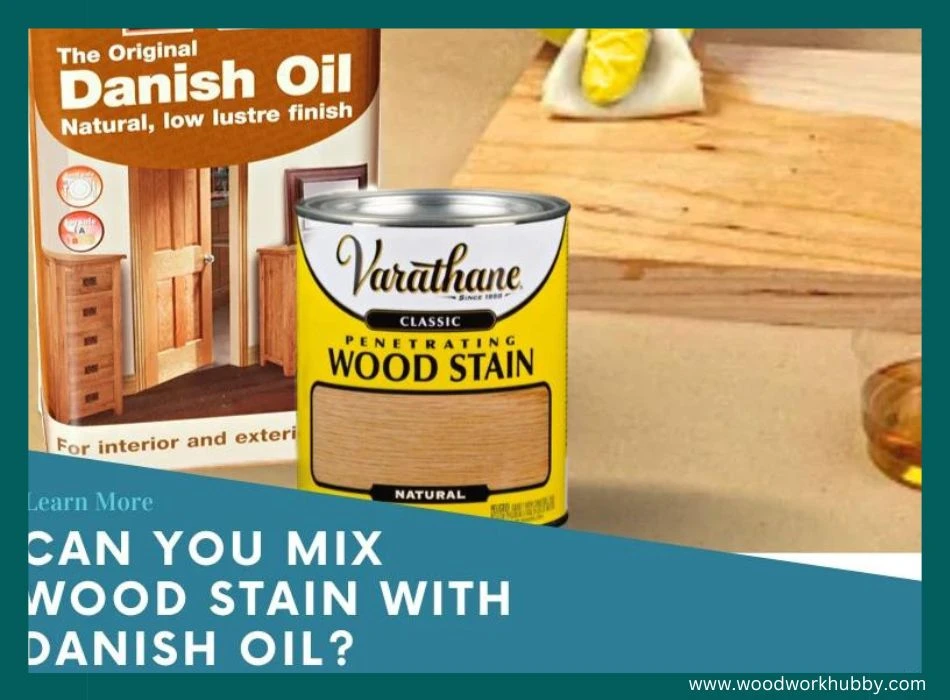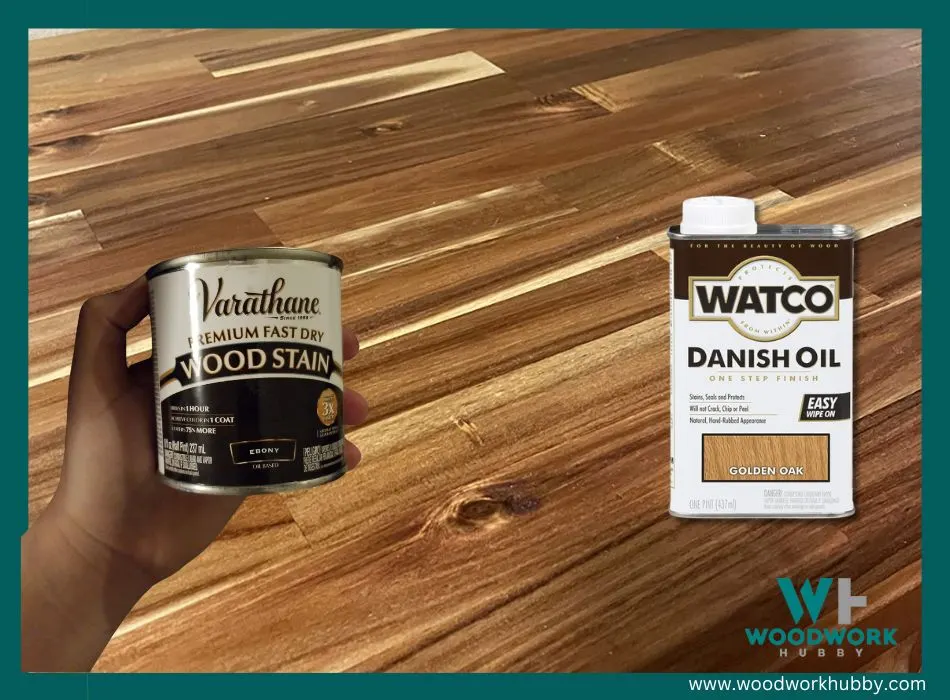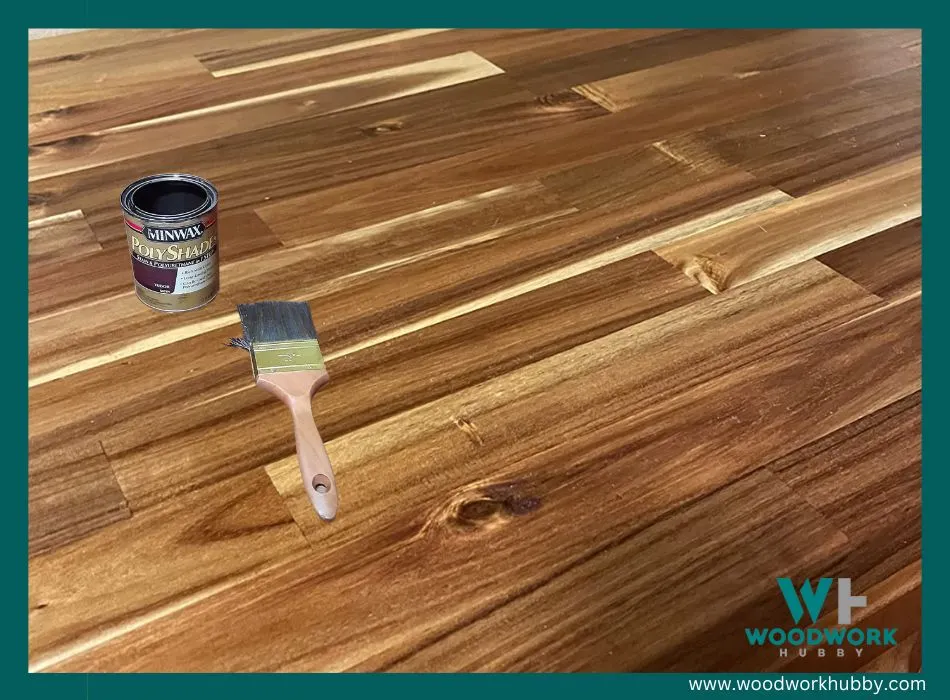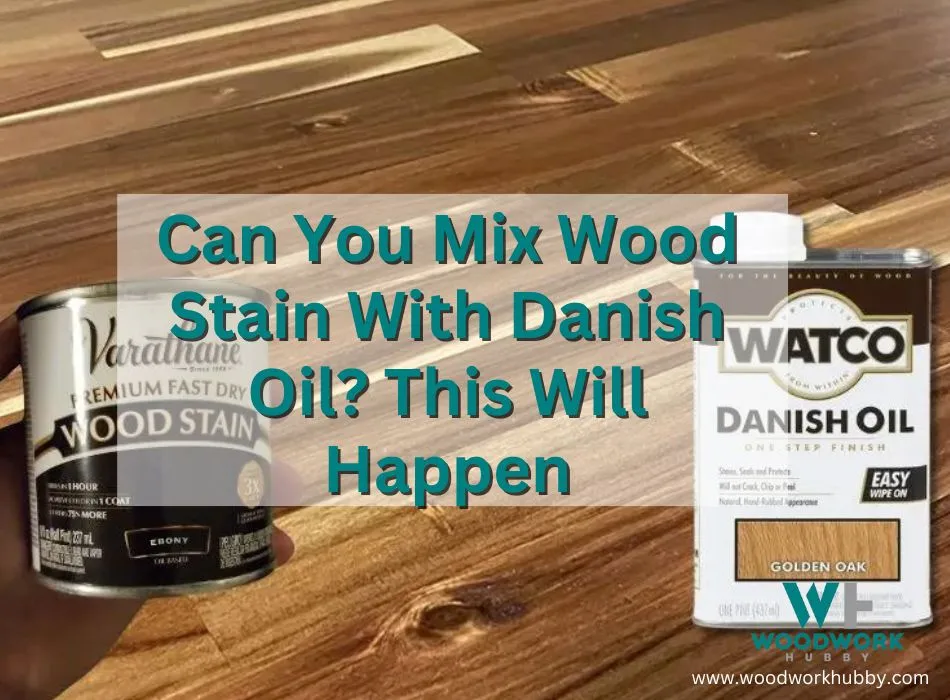When it comes to wood staining, you have many different options. I recently had this problem of choosing between oil-based or water-based stains, and whether you can even mix different types of stains. One popular combination is Danish oil and wood stain. But you may wonder whether you can mix wood stain with Danish oil.
You should not mix wood stain with Danish oil. This is because the binder used in the wood stain has a shorter drying time. The binder in Danish oil is designed to dry slowly, so it will not mix well with the wood stain. The result will be a sticky and uneven finish.
In this blog post, I will discuss what happens when you mix these two products and whether it is a good idea.
Be sure to check my article on whether Can I Put Odies Oil Over Tung Oil? (Here’s What Happened)
Can You Mix Wood Oil and Stain?

Wood oil and stain are two different things. A stain is a colorant that is applied to wood to change its color. Wood oil, on the other hand, is a finish applied to wood to protect it from water damage and UV rays.
You can mix these two products together, but I would not recommend them. The reason is that the wood oil will not mix evenly with the stain. The result will be an uneven and streaky finish.
Can You Mix Oil and Stain?
Oil and stain are different products, but they can be mixed. The reason is that oil-based stains have a binder designed to dry slowly. This means that the oil and stain will mix together evenly.
However, you should not mix water-based stains with oil-based stains. This is because water and oil do not mix. The same result will be seen when you mix water and oil; water is a polar molecule, and oil is a non-polar molecule.
Polar and non-polar molecules do not mix because they are immiscible. The same is true for water-based and oil-based stains; they are immiscible.
Can Danish Oil Be Applied Over Stain?

You can apply Danish oil over the stain. In fact, this is a common way to finish wood. The reason is that Danish oil will protect the stain from water damage and UV rays.
However, you should keep the following in mind:
Do Not Apply Water-Based Stain
If you apply a water-based stain, you must allow it to dry completely before applying Danish oil. Water-based stains have a shorter drying time, so they will not mix well with Danish oil.
Do Not Use Too Much Oil
You should not use too much oil when finishing wood. If you do, the oil will not be able to penetrate the wood, and it will sit on the surface. This will create a sticky and uneven finish.
The best way to apply Danish oil is to use a brush or rag. You should apply a small amount of oil to the surface of the wood and then wipe it off with a clean cloth.
Give the Stain Time to Dry
The stain takes around 48 hours to dry. You should not apply Danish oil until the stain has had time to dry completely.

Below is a table indicating the time required for the different wood stains and oil to dry:
| Product | Time (Hours) |
|---|---|
| Oil stain | 24-72 |
| Water stain | 12-24 |
| Danish oil | 72 |
Can You Stain Over Danish Oil?
You should not stain over Danish oil. The reason is that the oil will not allow the stain to penetrate the wood. The Danish oil has the ability to perfectly fill pores, latching onto the grains and hardening them into a durable resin. If the Danish oil is not completely removed before applying stain, it will cause the finish to appear streaky and uneven.
The best way to remove Danish oil from the wood is to use a chemical stripper. This will strip away the oil and allow you to start over with a clean surface.
You could try lightly sanding down till you get back to the bare wood surface to attempt to remove the Danish oil coating.
Once the finish is scraped/sanded off, you might find the stain will take to the wood. However, the stain will probably still turn out to appear splotchy in the end.
While doing a project, I found the solution to the question: Should You Sand Wood After Staining? Check out my article about my detailed findings!
Danish Oil Over Water Based Stain?
You can apply Danish oil over a water-based stain. In fact, this is a common way to finish wood. They are commonly known as liquid stains. These stains may be identified because they penetrate the wood as soon as they are applied. Although they are runnier than oil stains, they dry more quickly and are available in a range of colors.
The video shows how you can use oil-based and water-based products over each other.
Other advantages of using these stains include:
Ease of Cleaning
Water-based stains are very easy to clean up. This is because they are water-soluble. All you need to do is use a little bit of soap and water, and the stain will come right off.
Non-Toxic
Water-based stains are also non-toxic. This means that they are safe to use around children and pets. Oil-based stains can be toxic, so they should be used with caution.
Less Smell
Water-based stains have a faint odor, whereas oil-based stains can be quite strong. This is because the oil in the stain evaporates as it dries.
Stain and Danish oil are two different products, but they can be used together. Just be sure to follow the instructions and allow each product to dry completely before moving on to the next step.
Here is a quick Step-by-Step: How To Stain Wood To Be Lighter! Be sure to check it out!
Can You Darken Danish Oil?
You can darken Danish oil using polyshades. Polyshades are a product that can be used to darken Danish oil. It is a mixture of stain and polyurethane. It is available in various colors, so you can choose the one that best suits your needs.

To use poly shades, simply apply them to the wood with a brush and wipe away any excess. The darkness of the Danish oil will depend on how many poly shades you use.
A very detailed article about the Step-by-Step: How To Fix Too Much Stain On Wood! This will save you a lot of time!
Final Thoughts
You should not mix wood stain with Danish oil as it will create a sticky and uneven finish. This is because the binder in the stain is designed to dry for a shorter time.
If you want to use both products, apply the stain first and then the Danish oil. Be sure to allow each product to dry completely before moving on to the next step. I hope this article has answered your question: can you mix wood stain with Danish oil?




